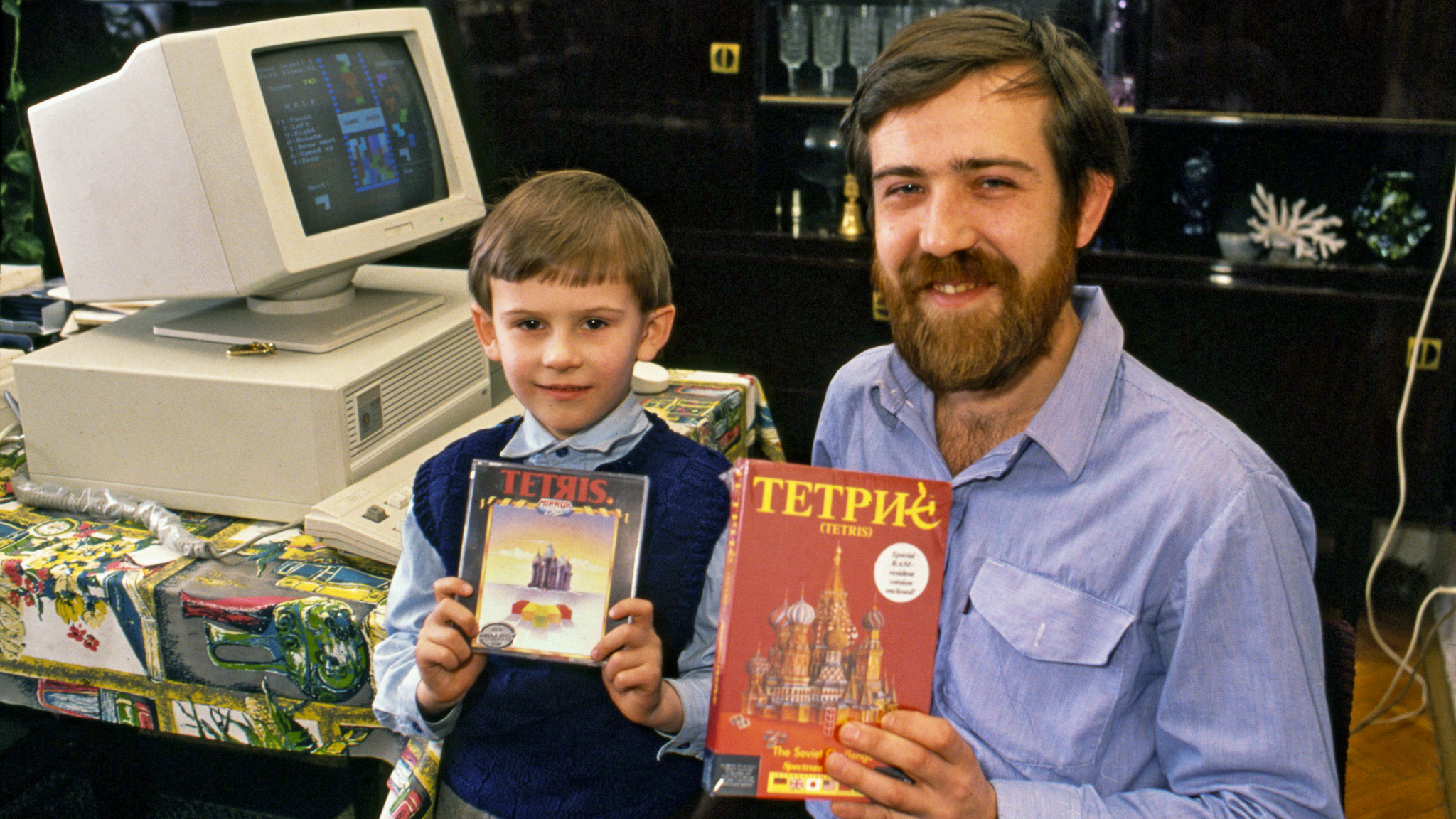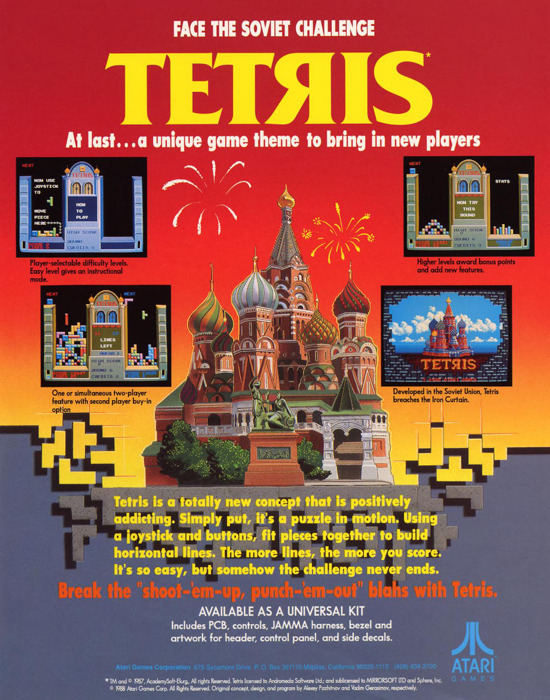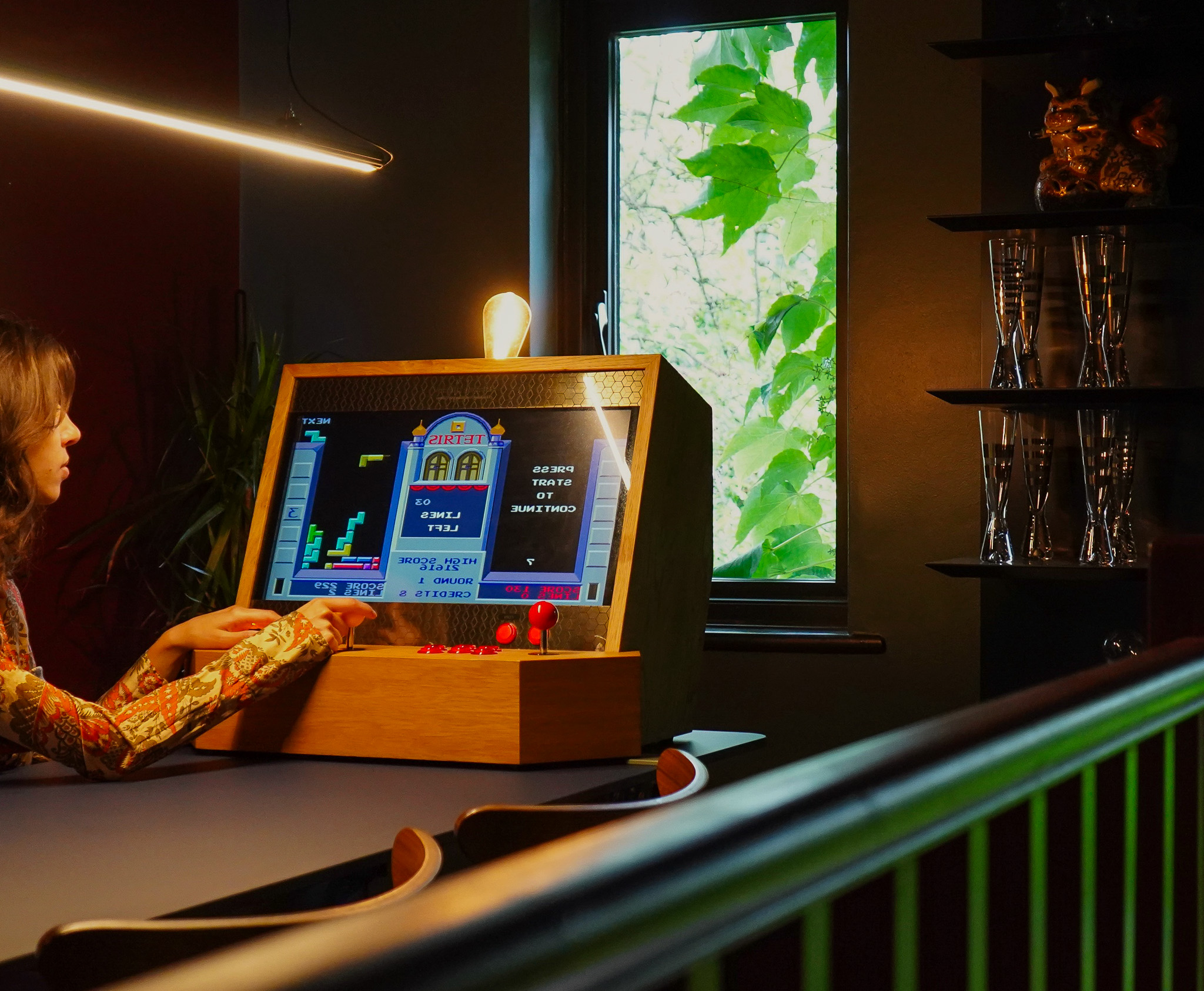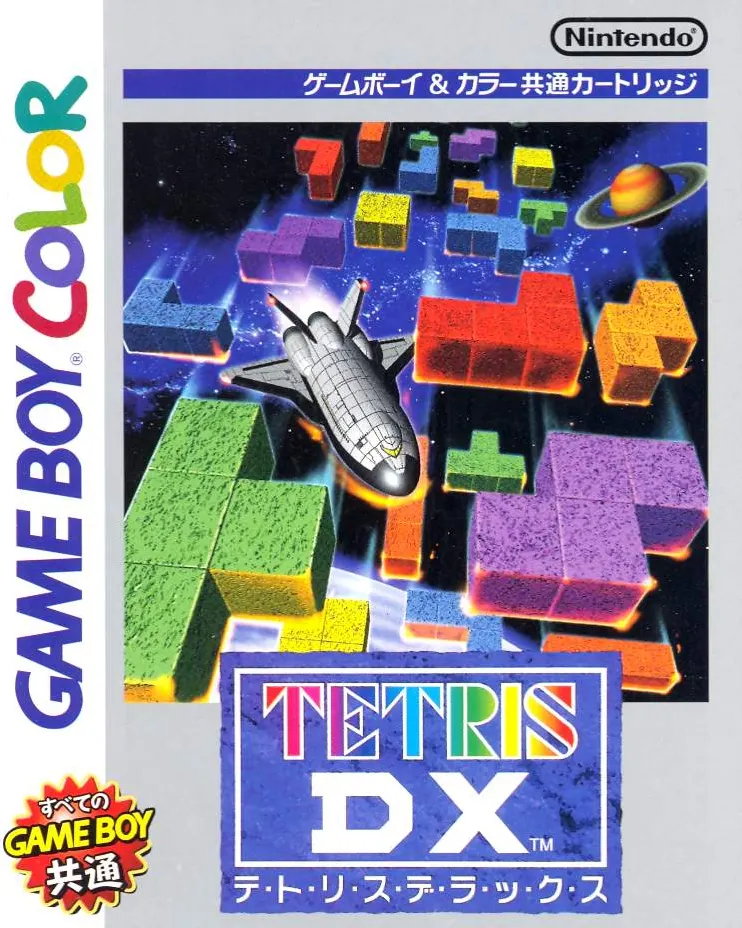Arcade Archives
TETRIS: THE SOVIET "MIND GAME"
A look into the complex history of Tetris, the Soviet "Mind Game", and how the game's legacy lives on today

It was the summer of 1984, and young Russian software engineer Alexey Pajitnov could not sleep. He was dreaming up puzzles to test the functions of the Soviet Electronika 60 computer, using a childhood game involving pentominoes. A few hours of mulling the idea over in his head gave birth to the thought of simplified digital version of the game, using minimal blocks with four edges that moved downwards on a screen. This was of course, the first conceptualisation of the game that we all know as Tetris.
The Beginning of Tetris
After his initial conceptualisation and drafting of the game, the name Tetris was coined by Pajitnov, by merging the Greek prefix ‘tetra’ (meaning four) with his favourite game of the time; tennis. Shortly after it’s development, the game was distributed by Pajitnov’s co-workers via floppy disks and Tetris began to spread like wildfire. Within two years, the game reached Hungary, where software salesman Robert Stein first came across it, immediately recognising it’s potential. Stein tracked down and contacted Pajitnov and urgently requested the licensing rights for the game. However, due to the difficulties communicating into Soviet Russia at the time, this message was sent by telex machine. Pajitnov’s response was one showing relative interest, but the confident Stein took his response as a solid yes. This is of course where the problems began.


The Chaos Begins
Stein, with his business hat on, failed to recontact Pajitnov about the rights, and went ahead in sub-licensing Tetris to British and American software publishers, who, having seen the potential of the game, wasted no time in launching the game to the public. Now you can imagine that when news of this reached ELORG, the Soviet organisation in charge of exporting software, alarm bells began to ring (hard). Stein’s spread of Tetris into the West was a shock to them, and they immediately summoned him Moscow for interrogation. Somehow, Stein managed to talk his way out of the situation, and acquired the proper rights for Tetris.
Rogers and Tetris for the Game Boy
Henk Rogers was a software entrepreneur, working for the American firm that Stein had sold the “unofficial” rights for Tetris to. Around 1988, having seen the publics reaction to Tetris, Rogers discerned that there was an even larger potential for the game, that being it’s introduction into Japan. After a series of cocky and brave business moves, Roger’s sold the console rights for the game to Atari, allowing for it’s expansion into Japan. However, he didn’t stop here. Soon after, Rogers decided he also wanted to publish the game on Nintendo’s new handheld console, the Game Boy.
Rogers was foolish. He flew to Moscow, without an invite, and set up a meeting with ELORG’s fearsome boss, Belikov, in an attempt to convince him of his plan. Belikov was furious. Luckily, Pajitnov was sat in on the meeting, and took a liking to Rogers. He mediated between the two men, and eventually got Belikov to agree to the contract. However, in the process of this development, Stein was exposed for the inauthentic licenses sold to Rogers, and he was soon after denied the right to ever publish Tetris again – unfortunately destroying Atari’s stake in the process.


Tetris Today – Where’s Pajitnov Now and How Does the Game Live On?
Throughout the complex history of this iconic game, and it’s takeover of the video game industry, it’s creator, Pajitnov never received a dime for the game. It wasn’t until about 20 years ago that ELORG finally reverted the rights of the game to their rightful owner. In the beginning of the 2000’s, Pajitnov and Rogers founded The Tetris Company, allowing the pair to keep the game alive today. Tetris is now available on countless consoles and mobile apps, and is recognised as one of the most influential games in the history of arcade games. Beyond it’s entertaining qualities, various studies have shown the long term benefits of playing Tetris, rooted in it’s improvement of the problem solving parts of our brains.
So, the next time you scroll through the games list on your arcade, why not test out Tetris? It’s simple, yet highly addictive gameplay will have you hooked, and it’s easy two players interface makes it a fun game to compete in with friends and family – if you need any inspiration, just check out this video from the official Tetris Tournament (it’s seriously impressive).
